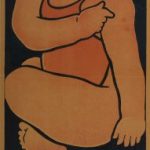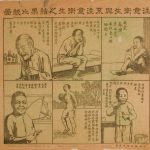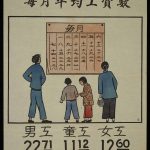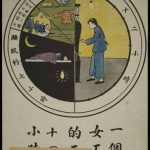Portrayed are the five posters that demonstrate several of the roles the Chinese churches played during the 1930’s in society!
Bread of Life
Top: Jesus declared, “I am the bread of life. He who comes to me will never go hungry, and he who believes in me will never be thirsty.” (Jn 6:35)
Written on the bowl: I am the bread of life.
Left of the bowl: He has became for us wisdom, righteousness, holiness and redemption.
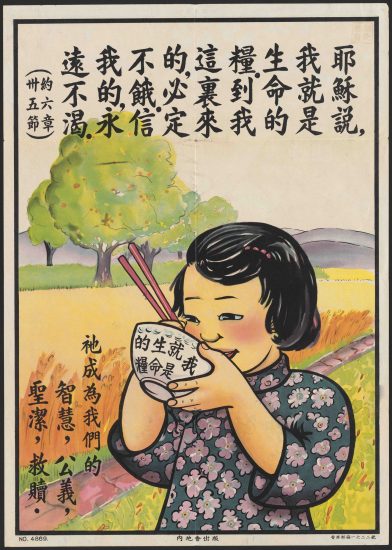
Average Monthly Wage of Workers in Shanghai
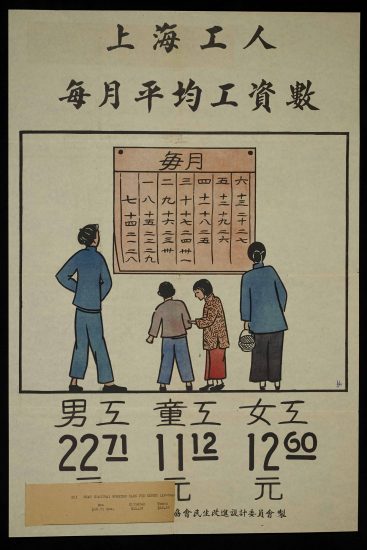
Top: Average Monthly Wage of Workers in Shanghai
Bottom (left to right): Male worker ROC$22.71, Child worker ROC$11.12, Female worker ROC$12.60
How a Woman Worker Spends Her 24 Hours a Day in China
Bottom: How a Woman Worker Spends Her 24 Hours
Clockwise on the chart: working 12 hours, sleeping about 7 hours, going back and forth to work about 2 hours, Eating, Education, and Household chores about 3 hours
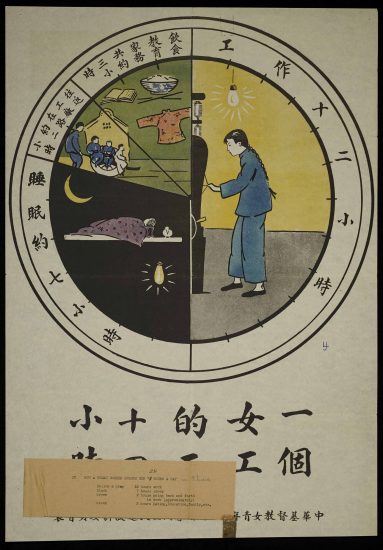
Add Your Heading Text Here
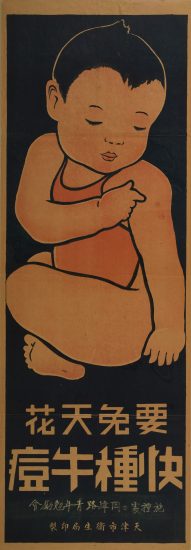
Get Vaccinated to Avoid Smallpox
Place – Gangwei Road, Youth Encouragement Society
Hygiene of the Teeth
Top row (right to left):
(1) I love to eat and never pay attention to my oral hygiene.
(2) I never paid attention to my oral hygiene, which made my teeth and other parts of my body sick. I am in a lot of pain.
(3) My teeth are falling out and they hurt so much. I will go to the dentist to get some medicine.
Bottle: Instant pain killer
Bottom row (right to left):
(1) I pay a lot of attention to oral hygiene. After eating, I always brush my teeth with a toothbrush and tooth powder. I go to the dentist and get my teeth cleaned twice a year.
(2) Because I take care of my teeth, I am healthy and I often play soccer and do other sports.
(3) I am healthy mentally. I am not only willing to go horseback riding, but I also brush my teeth often.
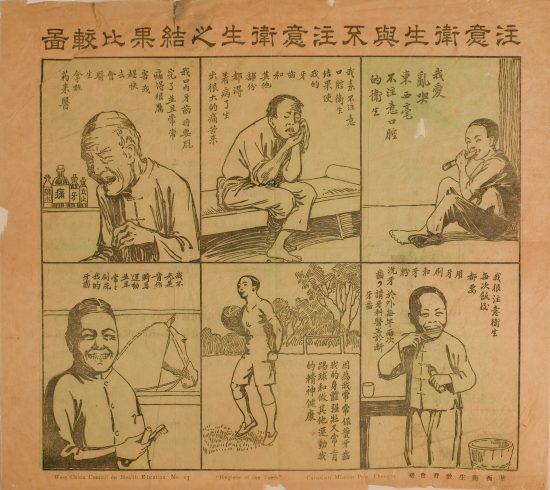
How the Church Leads
The commonality between the five chosen posters might not be immediately evident when taking a first glance at the variety of posters I have chosen, but when one looks closer, you may start to realize that every single one portrays elements of a basic life. Contrary to the theme being simply “give us our daily bread”, the commonality is that they all portray the theme of social issues and social justice to a certain extent. In the first poster named “Bread of life”, the life essential of food and nurture is portrayed, with other symbols of this theme including wages, women’s roles in society, and dental hygiene.
It’s somewhat surprising to see the role that Christianity played in the 1930’s in promoting and advocating social issues in Chinese society. Elements displayed on the posters may seem progressive, including the one calling for vaccinations, especially in light of large calls from within contemporary Christian evangelical culture in the United States. Having made that comparison there are more stark comparisons to be made between what is often associated with Christianity’s role in society and what the Chinese Christian community displayed in the 1930’s.
The vaccine poster in particular demonstrates that difference the most vividly, as vaccinations have become an incredibly hot topic among Christians globally, with conservative Christians often advocating against the use of them. The poster shows a baby being vaccinated against Smallpox, a disease that spread at incredible rate through China during the first half of the twentieth century. According to research by Xuetao Cao at the Institute of Immunology and National Key Laboratory of Medical Immunology, in Shanghai smallpox was one of the first diseases treated by vaccines in China, paving the way for more research and utilization as a mitigation strategy.
The general societal progress that seemed to occur in Chinese society during the 1930’s is evident in the other posters, including the poster in which a woman’s day is pictured. It depicts the toxic cycle in which she sleeps little and is laboring the rest of the day including being a stay at home mother. The critique that is uttered through this poster upon this societal and family distribution of roles as well as the complete lack of respect for a mother other than being a workhorse is being fueled by the Christian church in China.
In the ‘Encyclopedia of Missions’, the role of missions and specifically medical missions is explained, as to how missionaries came to China looking to both convert people to Christianity as well as provide social help in the form of medical care. One of the biggest organizations missionaries came to China with was the ‘China Inland Mission’, which Hudson Taylor created two decades before the thirties. The way which medical mission operated across the provinces varied, with different missionary efforts focusing on multiple forms of care as well as advocacy for social change within Chinese institutions.
On the poster that displays the child eating a bowl of rice, one such form of advocacy becomes evident. In the characters on the poster, John 6:35 is written in which Jesus explains that he is the Bread of Life. This leads to the message of the poster, namely that meals for all is important. A role Christians within Chinese society at the time took upon themselves included combatting famine and child hunger specifically.
The two remaining posters focus on very different focuses that Christians advocated for during the 1930’s. The first is a group of people looking at a calendar, in which a difference in wages is underwritten. This image serves as an illustrator for an issue that Christians attempted to tackle, namely wage differences between different genders and ages. Another form of strife for equality by the suppressed Christian community in China includes advocacy for dental care. Oral hygiene is explained on the last poster, making it approachable for the individual.
The existence and preservation of all of these posters is fascinating, and illustrates the role they played in society. The position of the Christian church and missions was fragile in China during the 1930’s, meaning that making widespread impact required creative ways of spreading their messages. Instead of oral passing of messages, these posters provided a simplistic, clear way to communicate without the outing of people who were involved in spreading these messages. Another way that the posters I have chosen stand out is how they are all focused on making a societal impact. While they don’t explicitly refer to Christians or Christianity in general they are a way for Christians to make a tangible impact by advocating and spreading the word on a higher quality of life for all. This fight for equality without even publicly attaching the name of their religion is fascinating and intriguing, leading to a more complex and intricate view of how missions and Christians impacted society in China in the 1930’s.


